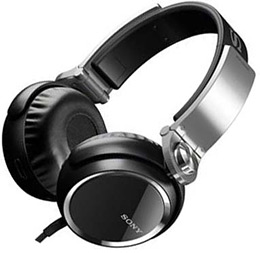Warming up the headphones: some people like it "hotter"
We independently test the products and technologies that we recommend.
 |
To warm or not to warm, that's the question
If you bought inexpensive earbuds to listen to the player in transport, warming up will be a waste of time. If you need high-quality sound with the transmission of the slightest nuances on all ranges, then it makes sense to spend effort on warming up. Of course, you can not specifically warm up – just listen to music for a while. Depending on the intensity of listening, the headphones will warm up sooner or later. If you want it to happen faster – in between listening, you can let the device work "idle".
Goals and means
You can use a variety of tracks to warm up. Someone thinks that ordinary music is quite suitable, someone combines it with recordings of noise - "white" or "pink", and the most advanced use special tracks for warming up. There is an opinion that in this way the headphones warm up faster and better. Theoretically, this is correct – noise, unlike music, covers the entire audible frequency spectrum. As for the tracks for warming up, the main thing is not to overdo it. They should be played strictly at the specified volume level, which is indicated on the media (for example, on the CD package). At the same time, it is worth paying attention to the purpose of the file – the track for testing audio systems is not suitable for warming up. Each type of speaker system (portable and stationary) has its own special type of tracks.
The main thing is not to overheat
The opinion that special tracks significantly accelerate warming up is really justified. The membrane achieves optimal elasticity not just due to the fact that the headphones play music for some time (often it is stipulated by the manufacturer), but because the membrane oscillates a certain number of times, and at different frequencies and with a large amplitude, which ensures a given strength of the track signals in the audible range. Therefore, it is so important not to exceed the volume of playback of such audio files, otherwise the membrane may be damaged.
 |
But you can damage the headphones with standard music. If you "warm" them with ordinary recordings, it is recommended to set the volume slightly above a comfortable level, but in no case allow the appearance of crackling, clicks or sound distortion. Otherwise, you risk ruining the device. Therefore, "warming up" headphones with music, it is better not to leave them on, but to use them for their intended purpose. This way you can control the volume level and reduce it when defects appear. If it is not possible to listen to music for the right amount of time (some manufacturers indicate that the headphones reach the maximum playback quality in 200-300 hours), you can use the radio to warm up not the audio recording, so the probability of damaging the headphones is much lower.
Important aspects
It is worth considering another important point – the peculiarity of sound perception. There is an opinion that if you listen to headphones for a long time, not only they warm up, but also the ears, or rather, the brain of the listener. A person begins to get used to the peculiarities of the sound of his audio system and ceases to notice any imperfections. This is often exactly what happens. It may seem to you that the headphones have warmed up, and the sound has noticeably improved, but in fact only your perception has "warmed up". To understand if this is the case, you need to listen to a new model of the same headphones after warming up. Then it will be possible to compare the sound and understand if there really were any changes.
You also need to remember that good sound depends on all components of the audio system: playback devices, attachments, headphone cables, amplifiers. By the way, about the latter. In order for the sound to "open up", headphones may need an amplifier, and a high-quality one. Without it, "warming" often makes no sense.
Articles, reviews, useful tips
All materials

















